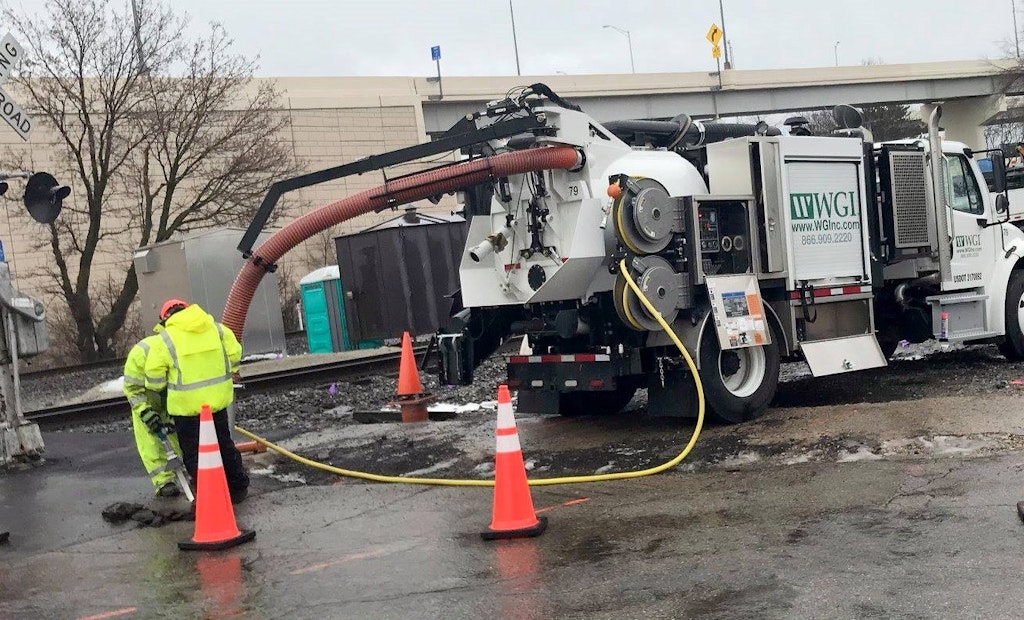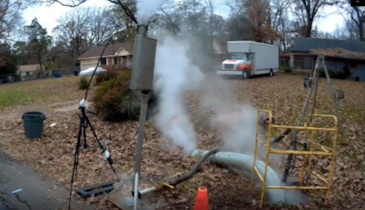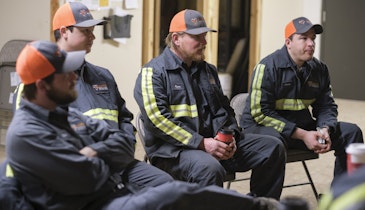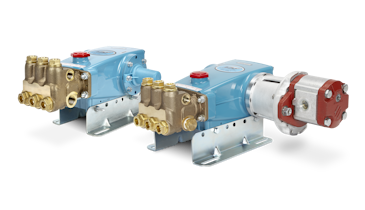Interested in Vacuum Excavation?
Get Vacuum Excavation articles, news and videos right in your inbox! Sign up now.
Vacuum Excavation + Get AlertsVacuum excavation is certainly not a new concept in the utility contracting world. It has proven to be the most accurate and safe way of locating utilities on a job site. Many contractors are starting to replace traditional hydroexcavation methods (digging with high-pressure water) and are instead choosing to dig with high-pressure air. This digging method is known as air excavation, and is gaining traction as a popular application for locating underground utilities.
Air excavation can have several advantages over hydroexcavation. Utilizing air to dig eliminates the need to carry large amounts of onboard water; therefore air excavators often come with a much smaller footprint than a hydroexcavator. Due to its small size, the RAMVAC AX is ideal for working in crowded urban environments and does not require a CDL licensed driver. CDL drivers can be hard to find, expensive, a challenge to keep and in some cases, they only want to drive and not operate. Although this non-CDL truck may be small in size, it comes with a large vacuum system up to 3,000 cfm and 18 inches Hg to get through even the toughest of ground conditions.
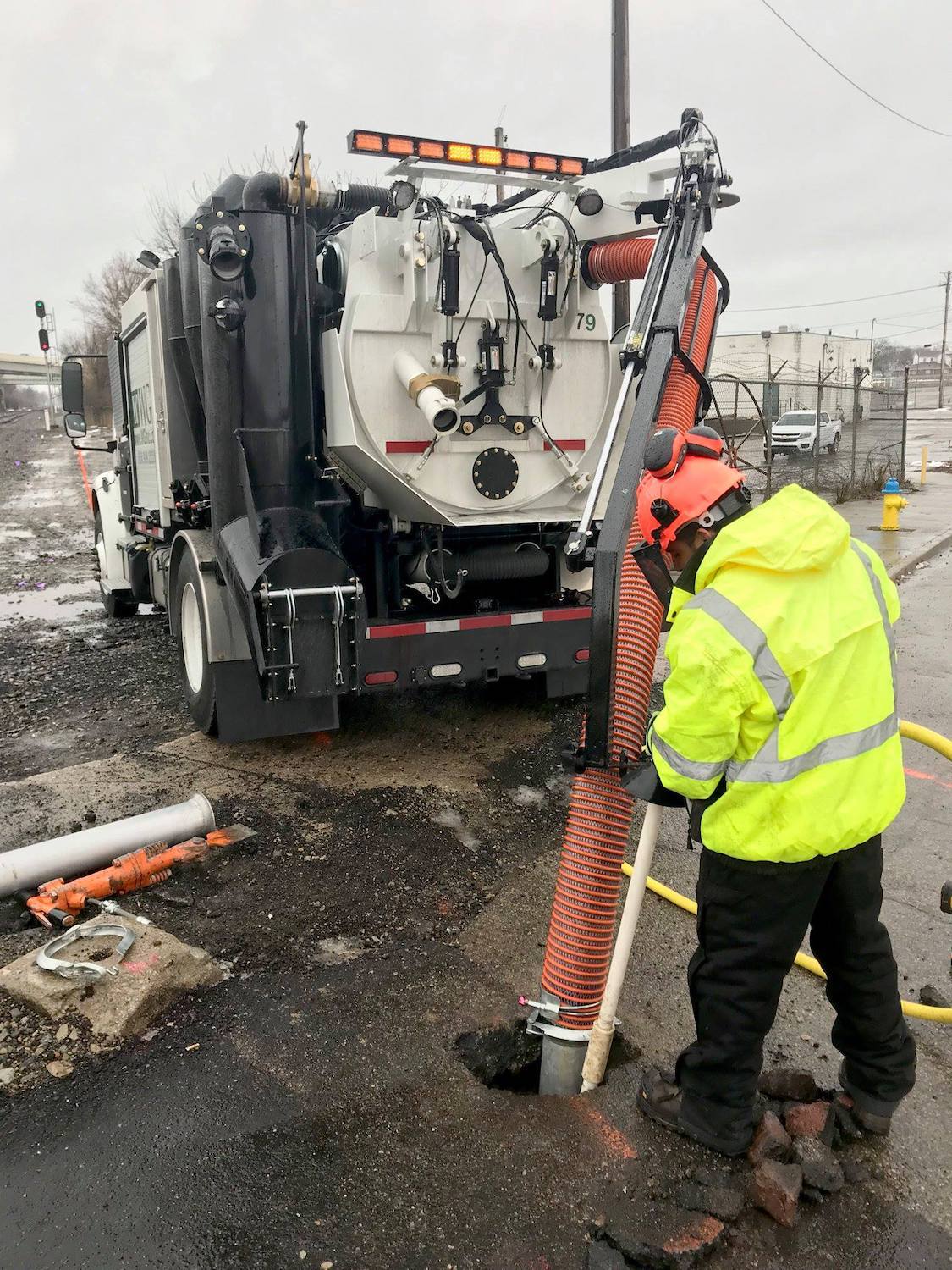
During hydroexcavation applications, once you run out of water, you are done digging. Depending on the location of your work site, water refill locations can be some distance. Refilling becomes time consuming and every minute costs money. However, an air excavation truck simply uses an endless supply of high-pressure air produced by an onboard compressor system — no filling — meaning operators save time and money.
Similar to the water source location, added travel to dump your debris tank can be a long and costly process when digging with water. Debris from a hydroexcavator can rarely be used as backfill because of its slurry form, and therefore must be dumped at a different location. Air excavation produces dry debris that can be used as backfill and dumped directly back into the dig site. In addition, off-loading debris before leaving a job site can help eliminate overweight vehicle citations due to driving with a full debris tank to a dumpsite.
The subsurface utility engineering (SUE) industry is a huge user of air excavation equipment. Air excavation is the preferred method for the SUE industry as the “test holes” they dig are often refilled with the same material within minutes after being dug. SUE companies performing Level A services commonly dig with high-pressure air and vacuum to locate the desired utility and then perform their documentation process (depth of utility, diameter of utility, condition of utility, etc.). This documentation is part of the final report provided to their customer. Because air excavation debris is simply dry dirt, it is ideal for backfilling potholes once all documentation has been gathered.
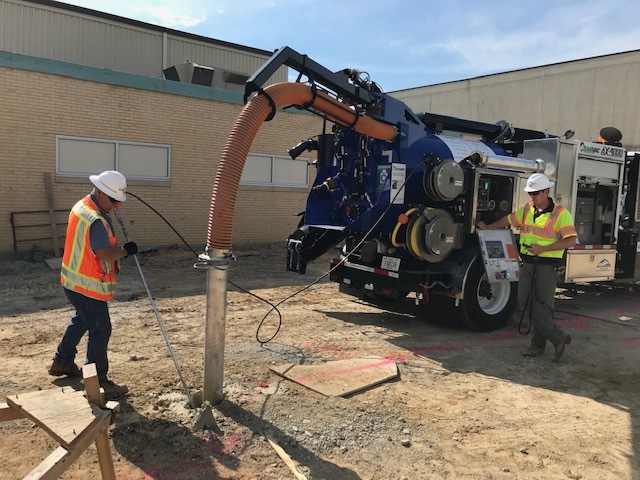
SUE companies also find air excavation ideal for clearing an area. With this process they are not digging to locate a specific utility; they are simply trying to make sure there are no unknown utilities on a proposed build site, proving beyond a doubt there are no hidden dangers below. Again, because this process requires backfilling the hole immediately, air excavation is the perfect application for this job.
As you can imagine, air excavation equipment comes in several different sizes with many options for different applications. Units with a minimum of 6-inch vacuum systems provide the best productivity, as they are larger in diameter and prevent debris from becoming clogged in the boom hose. Additionally, different soils require different pressure when air excavating. Systems with 250 psi (3,000 cfm) provide the best digging power. The RAMVAC AX offers all these features (including the aforementioned 3,000 cfm vacuum system) in a non-CDL configuration.
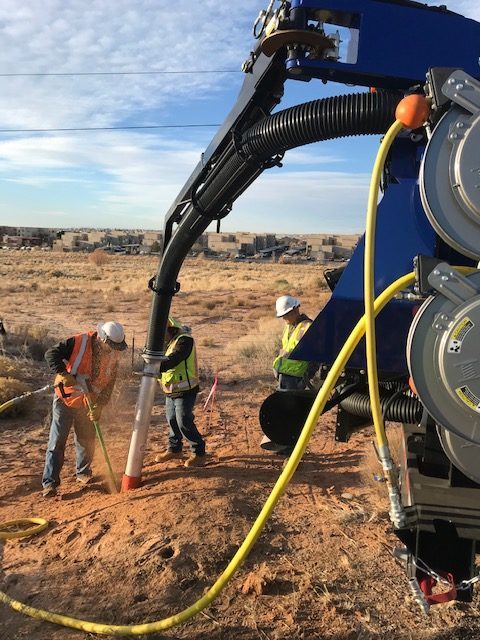
It is important to note that some manufacturers will simply add an air compressor to their existing hydroexcavator design and tout that as an air excavation truck. Some of these units can be problematic when digging with air in sticky clay soil, as the vacuum system becomes easily clogged. Hydroexcavators are designed to work with a slurry material (soil plus water), which can easily navigate the 90-degree turn area at the back of the debris tank, commonly referred to the rock head. Unlike slurry, dry material cut up with air (especially thick clay) can have problems making this turn and the rock head becomes a point of congestion. If you plan to dig with air, choose a purpose-built air excavator that is designed for digging specifically with air. Air excavators, like the RAMVAC AX have straight entry points into the debris tank eliminating points of congestion when dealing with dry material.
Vacuum excavation is the safest and most reliable method of locating utilities. At some point in the future, it may even become the standard, mandated application on every utility job site. There are many equipment options available to contractors who perform vacuum excavation. A dedicated air excavator can save you time and money when compared to a larger hydrovac truck or a small, low-power pull-behind unit.
To learn more about the RAMVAC AX series, visit RAMVAC by Sewer Equipment. For more information on available air excavators in stock and ready for immediate delivery, rental equipment or pre-owned units, visit www.rock-equipment.com.
